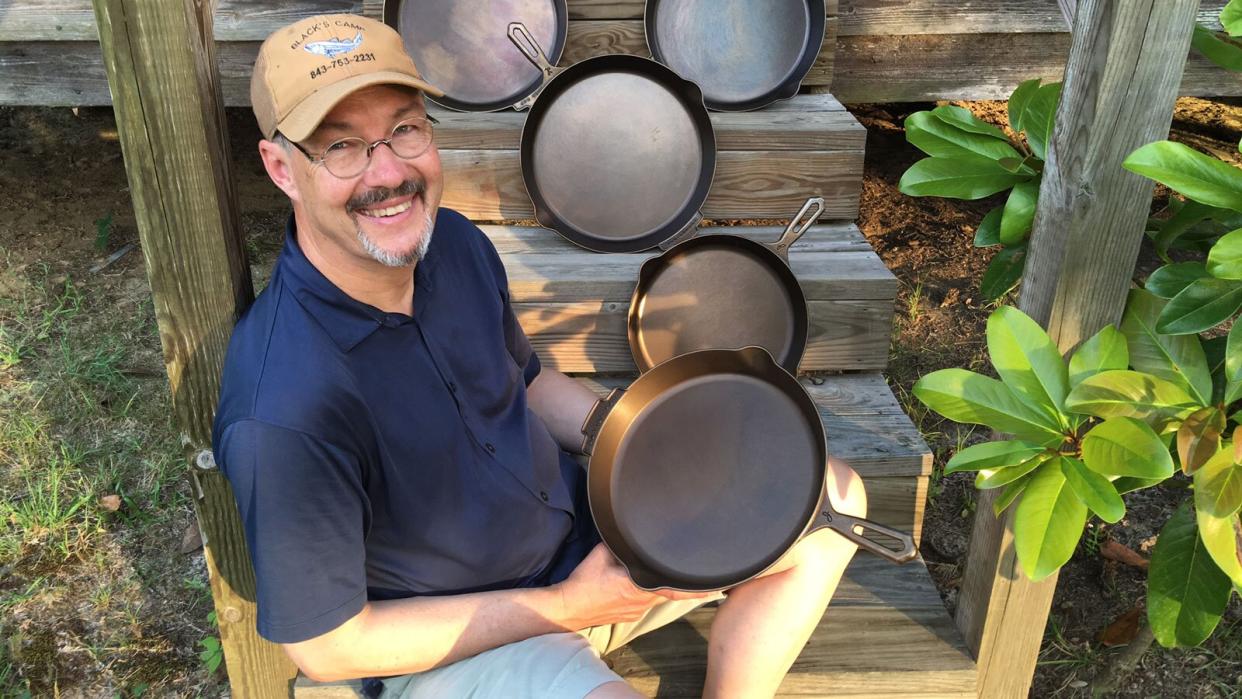The Real Reason Why Cast Iron Pans Are So Rough

Butter Pat Industries
Cooking technology has come a long way since mere open flames. We now take for granted the once-unimaginable convection ovens, microwaves, and even sous vide machines that reside in our kitchens. However, there are certain cooking tools that simply can't be improved, namely cast iron cookware.
While manufacturers have tried to further optimize cast iron pans over the past 50 to 60 years, many cast iron diehards don't believe anything can compete with pans from the early 20th century. Why is that, though? According to Dennis Powell Jr., founder of cast iron cookware company Butter Pat Industries, the entire evolution of cast iron can be explained by one simple event: the switch from a smooth-finished surface to a pre-seasoned, much rougher one.
RELATED: The 8 Best-Rated Cast Iron Skillets for Every Kitchen
If you happen to own a very old cast iron pan, maybe one that you've inherited from your grandmother or purchased at a yard sale or antique market, the first thing you notice is that the surface is completely smooth. However, most modern cast iron pans are not. According to Powell, this is where the divide began. "Up until the '50s, every cast iron pan ever sold in America was created without pre-seasoning," he says. "Then Lodge started selling their pans pre-seasoned because they knew that people no longer insisted on doing the seasoning themselves."
The entire concept of seasoning cast iron, which acts as a leveling agent so the proteins won't adhere to the pan, was a result of home cooks trying to fill in this new, rougher surface. The roughness that you feel on most modern cast iron is sand, which used to be removed during production. However, that step has since been eliminated by the majority of contemporary manufacturers. "A lot of cast iron today is produced in 90 minutes," says Powell. "But at the turn of the 20th century, cast iron would sit in molds for upwards of 48 hours before then being tumbled for 24 hours." As a result, vintage cast iron was incredibly smooth.
Many home cooks get frustrated with the cast iron seasoning process and the issues that occur when pans aren't seasoned properly, but there are new manufacturers, like Butter Pat Industries, that produce modern cast iron with a method similar to the one used in the early 1900s. When Powell began this project in 2013, he approached it not with the idea of creating a company, but that he wanted answers to the oldest questions about cast iron, like what makes the modern conventional pans so rough, and why were the original pans so smooth? Now, several years later, Butter Pat produces some of the smoothest cast iron available and is revered by chefs such as Sean Brock, Linton Hopkins, and John Currence.
RELATED: Great Cast-Iron Skillet Recipes
Besides producing incredibly high quality cast iron cookware, Powell also wants to educate consumers about how simple it is to maintain and clean smooth cast iron. "The smoothness on our pans is what releases food from the surface of the pan, not seasoning," says Powell. "We do pre-season our pans, but we do it in order to prevent rust more than anything. If your cast iron has a smooth surface, you can clean it with water, use steel wool on it, and scrape things off of it with a paint scraper without damaging the cooking surface." Compare that to the theories you hear about cast iron, like never remove fat out of the pan or use salt or potatoes to clean it, and the difference in quality becomes pretty clear.
More than 100 years after peak production, cast iron pans are still a cookware mainstay. However, proper seasoning and cleaning methods continue to frustrate cooks around the country. Maybe it's time to embrace this new, old take on cast iron, which improves upon a century-old process. You know that saying, "They don't make them like they used to anymore"? Well, in the case of Butter Pat Industries cast iron, maybe they do.

